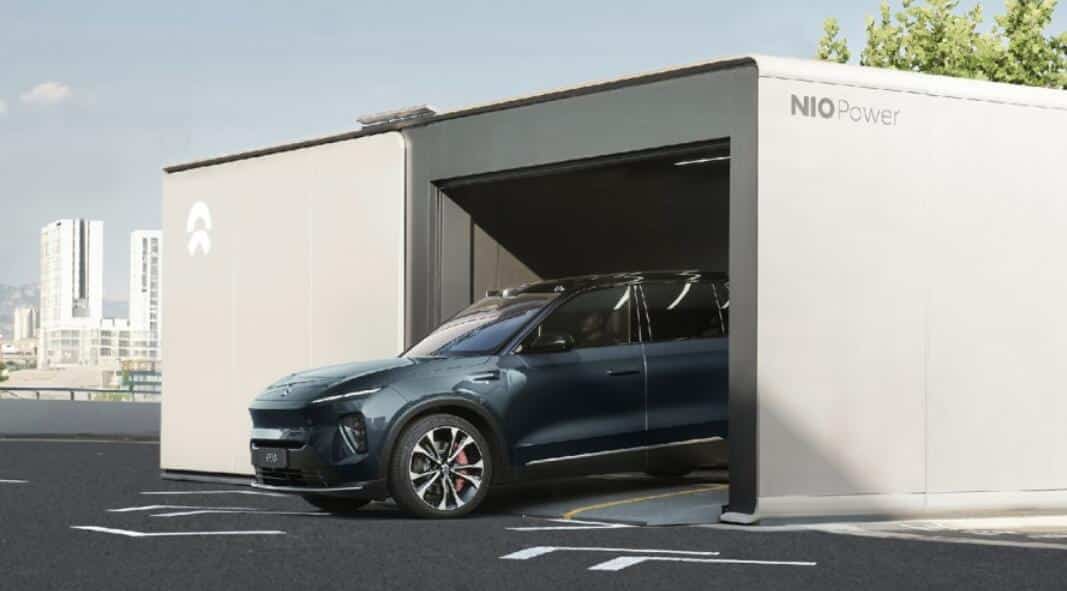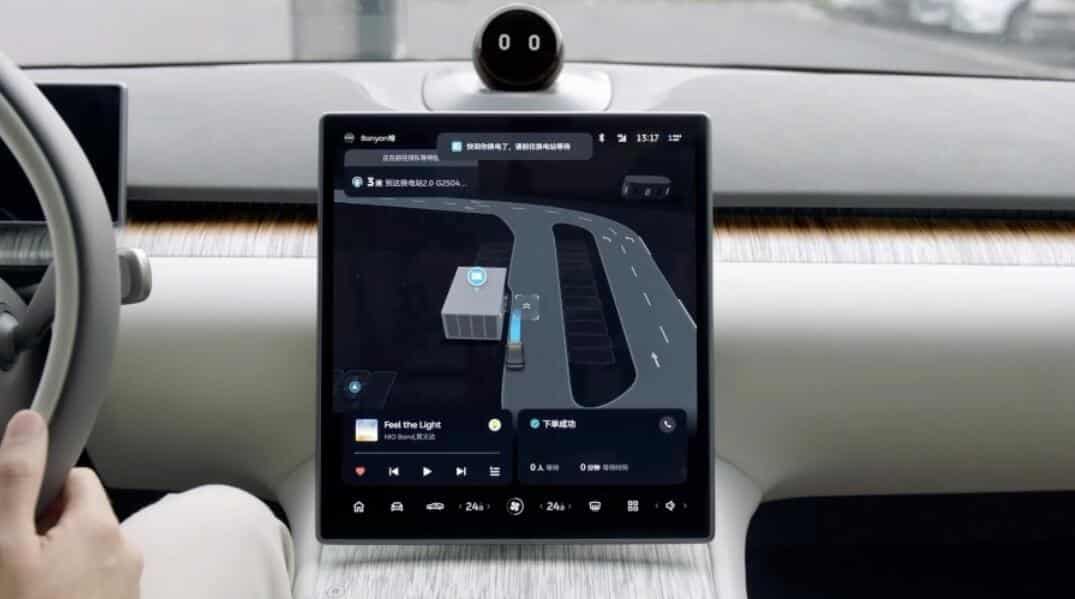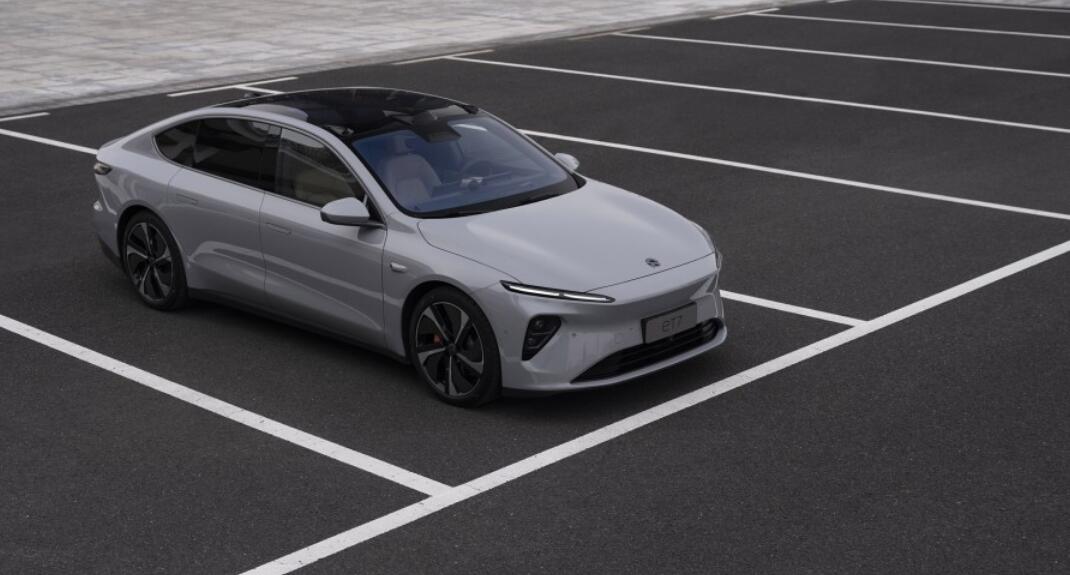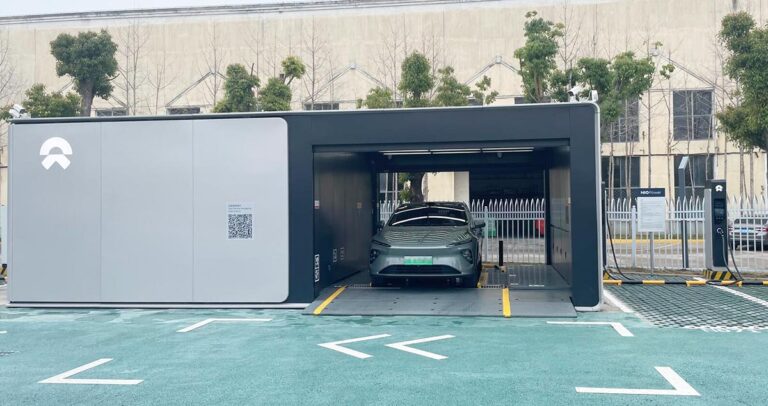The video shows a Nio vehicle traveling to a battery swap station by driving autonomously and driving away after completing the automatic battery swap.
A Nio (NYSE: NIO) executive has demonstrated in a video the ability of the company's vehicles to drive autonomously and automatically swap batteries at a battery swap station, as competition in China's autonomous driving space heats up.
Harry Wong, Nio's head of smart driving products and experiences, shared the video on Weibo today, showing a Nio vehicle traveling to a battery swap station at night by driving autonomously and driving away after completing the automatic battery swap.
The video below shows a Nio vehicle traveling to a swap station via autonomous driving and driving away after completing a battery swap automatically:
The vehicle is able to avoid obstacles while driving autonomously and reduces its speed after recognizing a speed bump.
Upon arriving at a battery swap station, it can park itself into the station and begin an automated battery swap to get a new battery.

(File phto. Credit: Nio)
The video showcases Nio's Power Swap on Pilot (PSP) feature, which is part of the additions in the company's Banyan 2.0.8 CN system that was pushed earlier this month.
In thd software update pushed on November 15, Nio brought the PSP on highway feature to its vehicles based on the latest NT 2.0 platform.
When the vehicle is driving on the highway with NOP+ (Navigate on Pilot Plus) on, it can autonomously drive from the main highway to the target service area, go to the battery swap station and complete a battery swap based on the navigation route and the status of the battery swap order.
After obtaining a new battery, the vehicle can drive out of the battery swap station, return to the main road and connect to the previous NOP + status to continue driving autonomously.
During this process, if the vehicle needs to queue up due to the number of users waiting for a battery swap, the vehicle can automatically queue up.
The PSP feature seamlessly integrates with NOP+ to automate and navigate the battery swap scenario on the highway, Nio said earlier this month.
Nio's battery swap stations require minor technical upgrades to support the PSP feature, with the first batch of 29 stations supporting it.
As of today, Nio has 2,187 battery swap stations in China, of which 691 are located along highways, according to its charging map.
Earlier this month, tech giant Huawei and extended-range electric vehicle (EREV) maker Li Auto (NASDAQ: LI) both sparked a lot of buzz when they demonstrated their autonomous driving capabilities in specific scenarios.
Wong's video is a response to calls from many Nio fans on Weibo for the company to release a similar video showcasing its autonomous driving technology.
Wong was previously the director of autonomous driving products at Xpeng (NYSE: XPEV) before joining Nio early last year.
While at Xpeng, he advanced the company's NGP (Navigation Guided Pilot) and Memory Parking programs, and was one of the more media-engaged autonomous driving product directors in the automotive industry, local media outlet Xchuxing previously reported.



